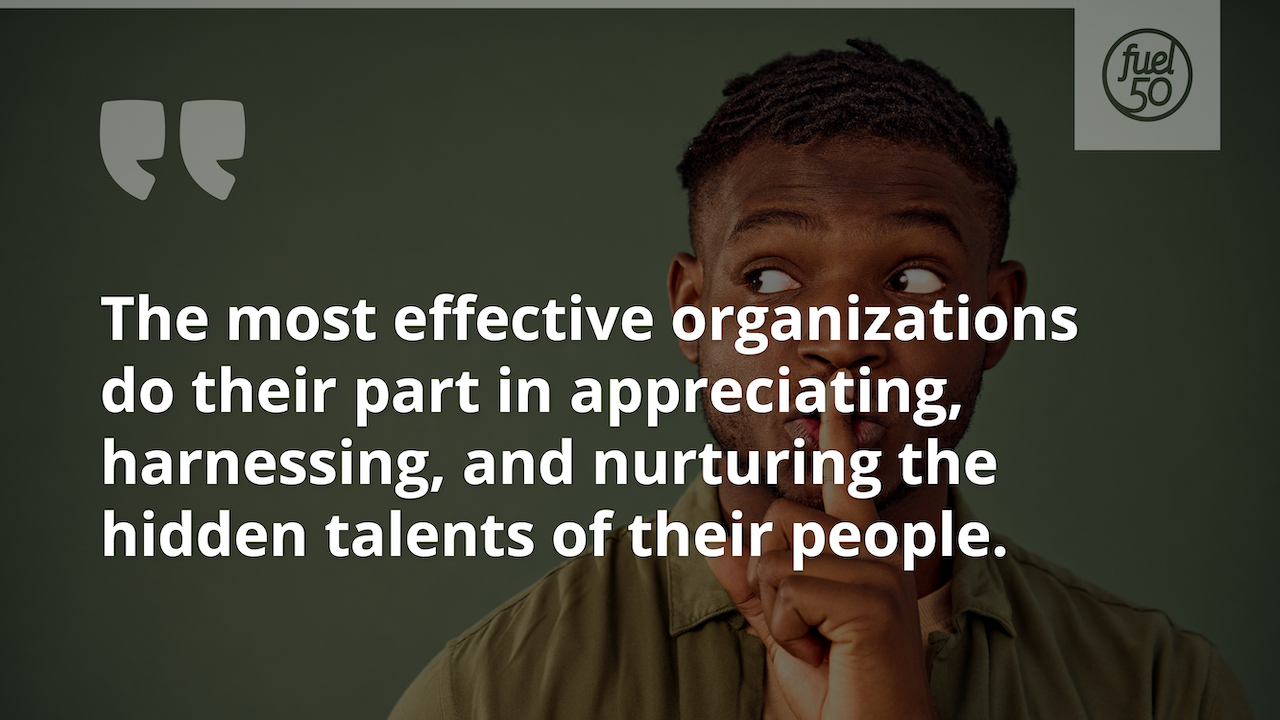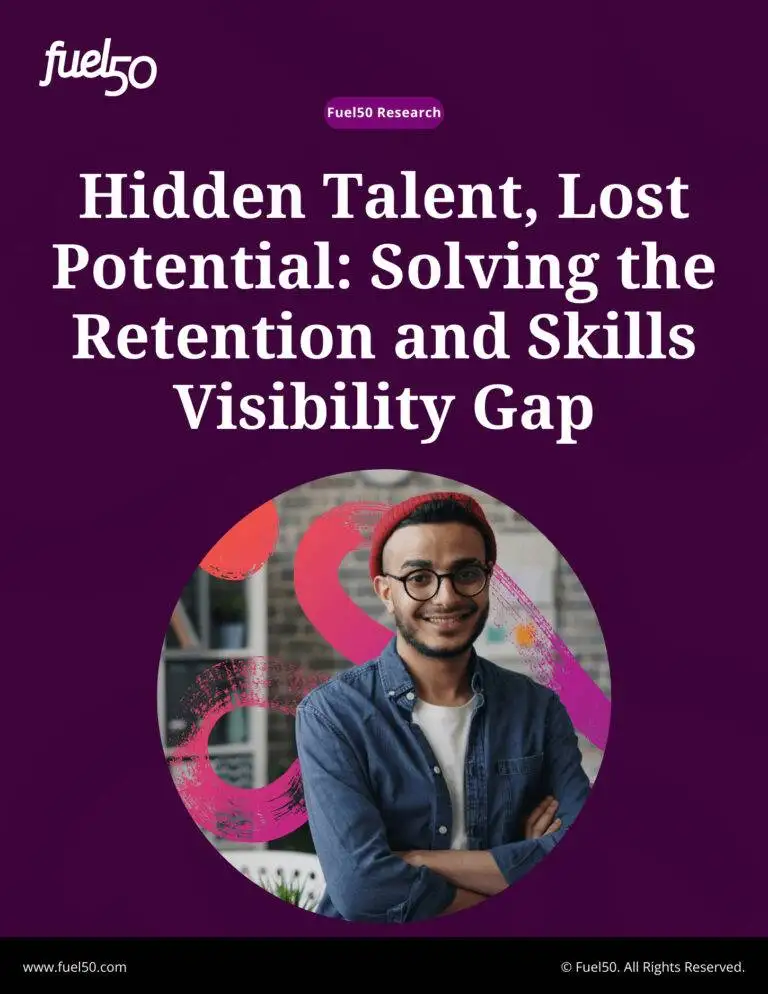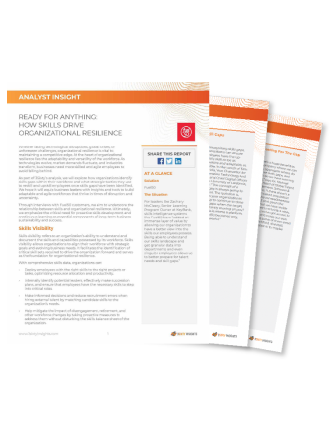Did you know your organization could be sitting on a goldmine of ‘silent skills’? An APM survey found that 30% of UK employees had secret skills they were keeping from the organization because they were not part of their job description.
The kicker? Many of these skills are in high demand for organizations needing to stay agile in today’s fast-changing environment. This highlights how some of the most valuable skills are often hidden deep within your workforce, just waiting to be discovered and developed.
Employees are traditionally hired based on a certain set of skills associated with a role, however, this doesn’t always illustrate their full potential. Imagine an accountant with secret skills in web design, or a software developer who could have unsuspecting event planning experience or a flair for creative writing– the possibilities are endless.
While these skills may not be directly related to their day-to-day responsibilities, they have the potential to be incredibly beneficial to the organization. All it takes is the right game plan to uncover them.
Headline after headline speaks of skills shortages and the tight labour market, yet bosses are missing a trick. There’s a vast pool of untapped talent within British businesses that isn’t being harnessed to its full potential. – Adam Boddison, Chief Executive at APM

What’s stopping organizations from discovering employees’ silent skills?
Before we dive into how you can uncover silent skills, it’s important to note why HR teams often find it difficult to identify and tap into these silent skills. Reasons for this can include:
- Employees may not be consciously aware of the hidden skills they possess
- Employees may think certain skills aren’t relevant to their role so they choose not to share them with the organization
- HR teams focus more on credentials and previous experience when hiring, which does not account for hidden skills
- HR teams hire based on specific skill sets required for a role, rather than a broader set of skills that can be used across the organization
These factors create a major roadblock when it comes to utilizing existing skill sets within your workforce. To address these challenges, organizations need to adopt a more holistic approach to identifying and leveraging employee potential.
It’s time to ditch the notion of employees being cogs on a wheel who are hired only for a specific set of skills. They are capable of so much more than that – and the most effective organizations do their part in appreciating, harnessing, and nurturing the hidden talents of their people.
It’s even more vital to look within individual employees for hidden strengths, especially at times when hiring and promotions are on hold. In short, plumb the depths of each person you currently manage to fish out the talents that lurk beneath. – Harvard Business Review
Tip 1: Create an agile workforce with a skills-based approach
The first and arguably the most important tip is to evolve your organization to be more aligned with today’s skills-focused economy. This is where a skills-based approach comes in – instead of relying on the traditional approach where employees are put into roles based on their education, credentials, and experience, the skills-based approach matches employees to tasks based on their skills, capabilities, and interests.
This creates a more agile and dynamic workforce that can strengthen, expand, and diversify its skill sets to fit the needs of the organization while also fulfilling the aspirations of employees. Learn more about how to transform into a skills-based organization here.
Tip 2: Get to know your people
A crucial part of uncovering silent skills is truly understanding who your people are beyond their job titles. What are their hobbies, interests, and preferences? People leaders will have to do the groundwork by digging deeper and asking employees these questions. Building stronger leader-employee relationships helps create a supportive and encouraging environment where employees feel valued for their skills and feel more comfortable sharing their hidden skills.

Tip 3: Leverage technology that gives you better skills visibility
There’s no feasible way to uncover and effectively harness silent skills until you have clear visibility into the skills across your organization. Leveraging technology such as skills-based talent marketplacesbuilds the necessary framework organizations need to gain better visibility into the skills employees currently have, what skills they want to learn more of, and the critical skills gaps needing to be filled for the organization to be future-ready.
We have many silent skills within our org chart that we’re not using because that’s not what that person was hired for. The ability to find people who have those silent skills and identify them through automated matching of profiles, skills, and experience, opens the door to finding candidates that don’t know there’s an opportunity, or that the manager does not know would be a good candidate. – Kian Cole stock, CIO at University of California, Irvine (UCI)
Discover more about how UCI is uncovering silent skills within its organization here.
Tip 4: Give employees the chance to exercise and develop their skills
As skills become the new currency across your organization, the strengthening and development of your people’s skills will be paramount. Providing development opportunities through internal mobility, short-term projects, and gigs gives employees the chance to exercise their silent skills, try new roles, upskill, and expand their skill sets.
This creates a mutually beneficial system where employees get the chance to develop their existing skills, learn new skills, and gain new experiences, while the organization builds a highly skilled and motivated talent pool that can be tapped into as and when needed.
So many people clearly feel they are not being used to their full potential… Employers’ best investment looks likely to be in quality training to empower their people to fulfil their potential.– Adam Boddison – Chief Executive at APM
Don’t let the silent skills within your workforce pass you by
As the skills landscape continues to evolve more rapidly than ever just remember that the skills you are looking for could be right under your nose. Don’t underestimate the full potential of your people. With the right tools to uncover, develop, and nurture the critical skills you need for the future, your organization will be a force to be reckoned with.











